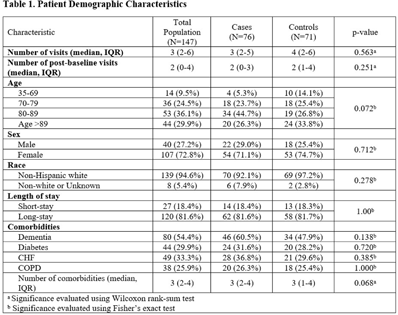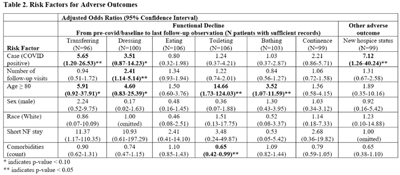264 results
Reflectance Transformation Imaging for the Recording of Incised Graffiti: A Case Study from the Maya Site of Holtun, Guatemala
-
- Journal:
- Advances in Archaeological Practice , First View
- Published online by Cambridge University Press:
- 29 January 2024, pp. 1-11
-
- Article
-
- You have access
- Open access
- HTML
- Export citation
An exploratory study of psychosis risk factors in individuals who are referred but do not meet criteria for an early intervention in psychosis service
-
- Journal:
- BJPsych Open / Volume 10 / Issue 1 / January 2024
- Published online by Cambridge University Press:
- 05 January 2024, e21
-
- Article
-
- You have access
- Open access
- HTML
- Export citation
Glacier fluctuation chronology since the latest Pleistocene at Mount Rainier, Washington, USA
-
- Journal:
- Quaternary Research , First View
- Published online by Cambridge University Press:
- 03 January 2024, pp. 1-21
-
- Article
- Export citation
1 Associations of Locus of Control and Memory Self-Awareness in Older Adults with and without MCI
-
- Journal:
- Journal of the International Neuropsychological Society / Volume 29 / Issue s1 / November 2023
- Published online by Cambridge University Press:
- 21 December 2023, pp. 676-677
-
- Article
-
- You have access
- Export citation
Predicting childhood ADHD-linked symptoms from prenatal and perinatal data in the ABCD cohort
-
- Journal:
- Development and Psychopathology , First View
- Published online by Cambridge University Press:
- 22 March 2023, pp. 1-14
-
- Article
-
- You have access
- Open access
- HTML
- Export citation
Eye-tracking evidence for fixation asymmetries in verbal and numerical quantifier processing
-
- Journal:
- Judgment and Decision Making / Volume 16 / Issue 4 / July 2021
- Published online by Cambridge University Press:
- 01 January 2023, pp. 969-1009
-
- Article
-
- You have access
- Open access
- HTML
- Export citation
Nontraditional Agricultural Exports in Latin America
-
- Journal:
- Latin American Research Review / Volume 27 / Issue 2 / 1992
- Published online by Cambridge University Press:
- 12 October 2022, pp. 43-82
-
- Article
-
- You have access
- Export citation
Transnational Alliances and Development Policy in Latin America: Nontraditional Export Promotion in Costa Rica
-
- Journal:
- Latin American Research Review / Volume 32 / Issue 2 / 1997
- Published online by Cambridge University Press:
- 05 October 2022, pp. 71-98
-
- Article
-
- You have access
- Export citation
Sovereign Limits and Regional Opportunities for Global Civil Society in Latin America
-
- Journal:
- Latin American Research Review / Volume 36 / Issue 3 / 2001
- Published online by Cambridge University Press:
- 05 October 2022, pp. 7-35
-
- Article
-
- You have access
- Export citation
Psychotic experiences in the general population, a review; definition, risk factors, outcomes and interventions
-
- Journal:
- Psychological Medicine / Volume 52 / Issue 15 / November 2022
- Published online by Cambridge University Press:
- 25 August 2022, pp. 3297-3308
-
- Article
-
- You have access
- Open access
- HTML
- Export citation
Postacute sequelae of SARS-CoV-2 (PASC) in nursing home residents: A case–control study
-
- Journal:
- Antimicrobial Stewardship & Healthcare Epidemiology / Volume 2 / Issue S1 / July 2022
- Published online by Cambridge University Press:
- 16 May 2022, pp. s41-s42
-
- Article
-
- You have access
- Open access
- Export citation
Blanket NOP rules and regional realities: from the field
-
- Journal:
- Renewable Agriculture and Food Systems / Volume 37 / Issue 6 / December 2022
- Published online by Cambridge University Press:
- 27 April 2022, pp. 644-648
-
- Article
- Export citation
Prospective Evaluation of Health Communication Effects on Market Outcomes
-
- Journal:
- Journal of Benefit-Cost Analysis / Volume 13 / Issue 1 / Spring 2022
- Published online by Cambridge University Press:
- 08 April 2022, pp. 34-56
-
- Article
- Export citation
Preface
-
- Book:
- Demands of Justice
- Published online:
- 03 March 2022
- Print publication:
- 24 February 2022, pp xi-xvi
-
- Chapter
- Export citation
1 - Introduction
-
- Book:
- Demands of Justice
- Published online:
- 03 March 2022
- Print publication:
- 24 February 2022, pp 1-11
-
- Chapter
- Export citation
6 - “Together for Rights”
-
- Book:
- Demands of Justice
- Published online:
- 03 March 2022
- Print publication:
- 24 February 2022, pp 126-169
-
- Chapter
- Export citation
4 - Expanding the Global Neighborhood
-
- Book:
- Demands of Justice
- Published online:
- 03 March 2022
- Print publication:
- 24 February 2022, pp 52-93
-
- Chapter
- Export citation
7 - Conclusion
-
- Book:
- Demands of Justice
- Published online:
- 03 March 2022
- Print publication:
- 24 February 2022, pp 170-180
-
- Chapter
- Export citation
Figures
-
- Book:
- Demands of Justice
- Published online:
- 03 March 2022
- Print publication:
- 24 February 2022, pp viii-viii
-
- Chapter
- Export citation
Dedication
-
- Book:
- Demands of Justice
- Published online:
- 03 March 2022
- Print publication:
- 24 February 2022, pp v-v
-
- Chapter
- Export citation





